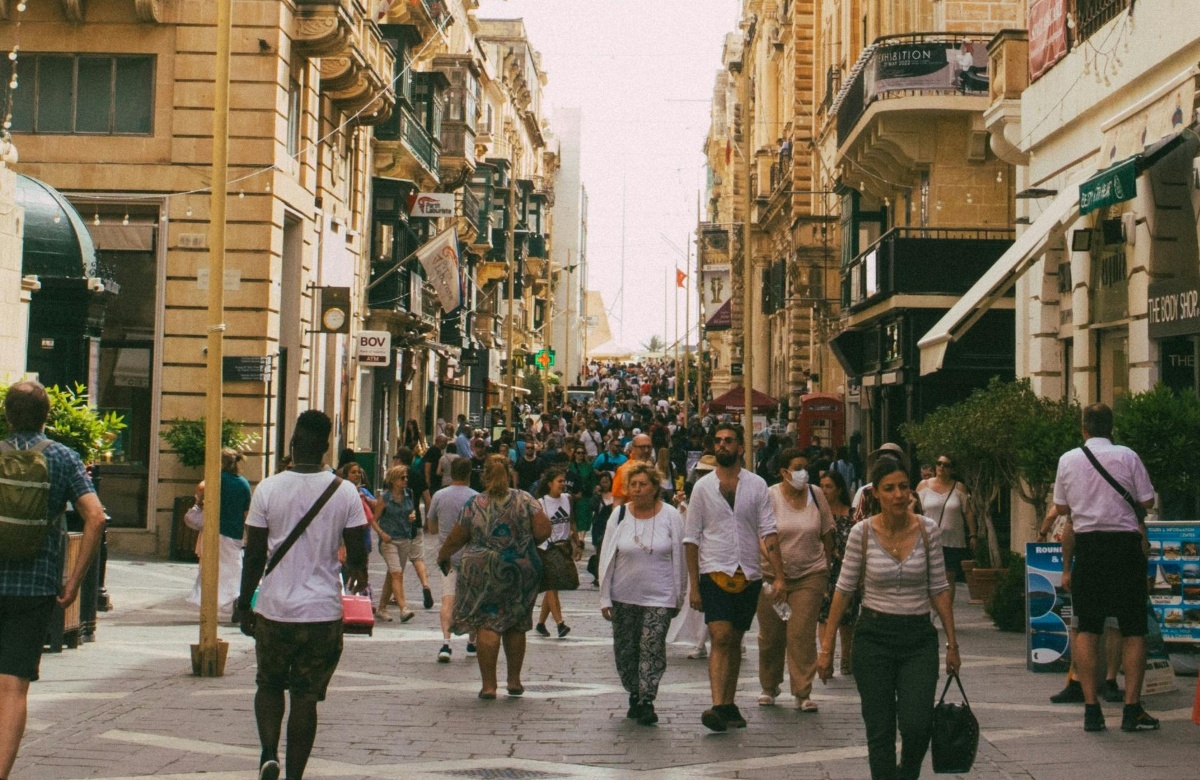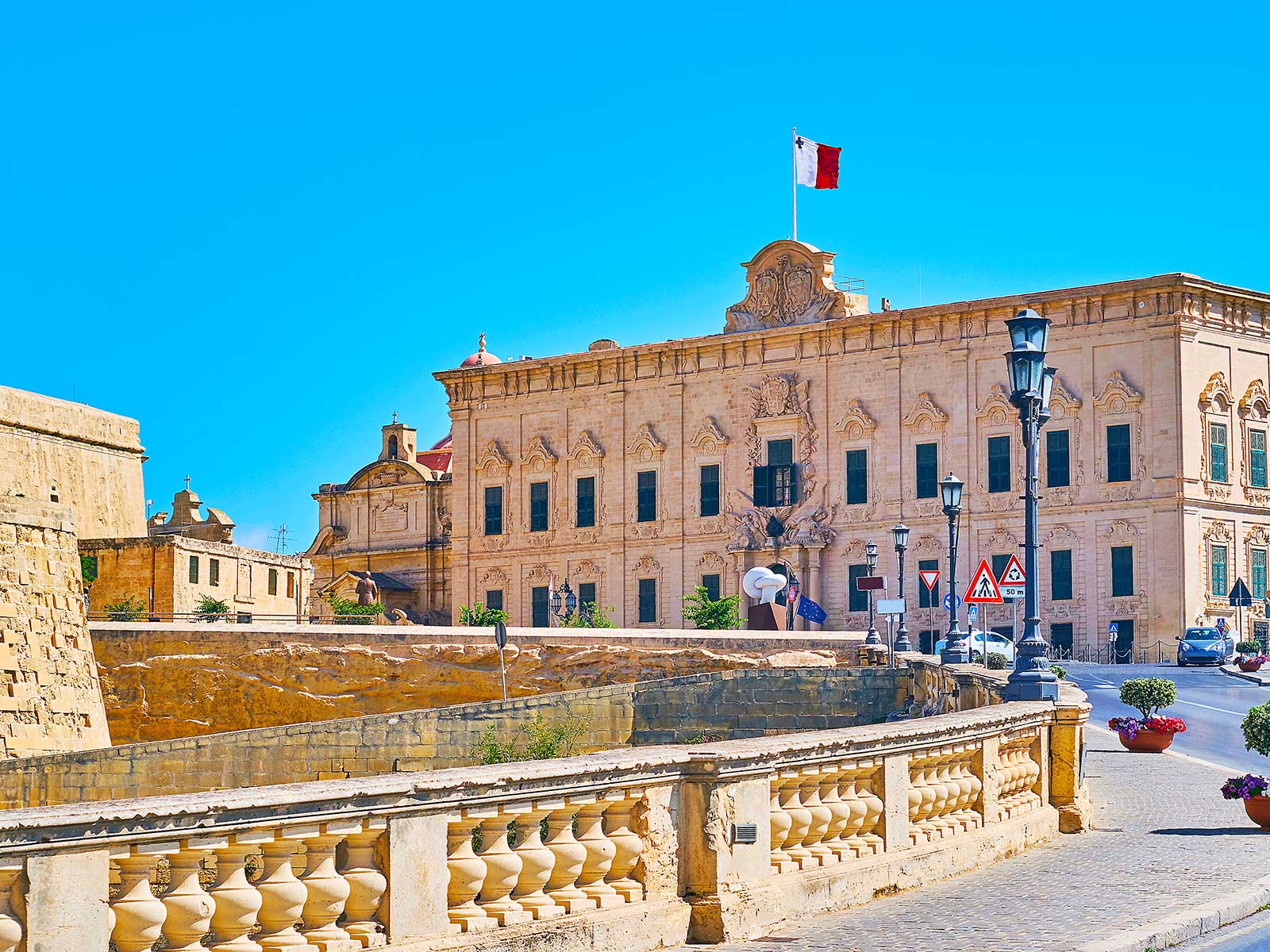Malta’s effective population reached 649,546 in August 2024 thanks to the presence of 80,701 tourists.
New figures released by the National Statistics Authority (NSO) calculated that the peak tourism month of August saw an additional 14 tourists for every 100 residents.
This measure of ‘tourism intensity’ was the lowest in December, when it stood at only 2.3. That month, the effective population stood at 581,720, 12,875 of whom were tourists.
The seasonal nature of tourism means that the effective population fluctuates on a monthly basis. There was a difference in the effective population of 67,826 between the highest and lowest tourism months in 2024.
Annual tourism intensity was 8.2 in 2024, meaning that for every 100 residents there were approximately eight tourists. This is an increase of one tourist for every 100 residents when compared to 2023.
Geographic differences
Apart from varying seasonally, tourism intensity also varied geographically, with the Northern Harbour (including Sliema and St Julian’s) and Northern (including Mellieħa and St Paul’s Bay) having the largest average annual tourist population.
St Julian’s and Valletta stand out with the most pronounced tourism intensity. St Julian’s had almost 80 tourists for every 100 residents, followed by Valletta with 69.4.
When comparing to the previous year, Valletta had the largest increase in terms of tourism intensity, from 53.5 to 69.4. This means that, in Valletta, in 2024 there were nearly 16 more tourists for every 100 residents compared to 2023.
Impact on population density
The impact of the tourist population can also be measured in terms of the size of the geographical area. Malta’s resident population density in 2024 was 1,806 residents per kilometre squared. When considering the average annual tourist population this increased to 1,954 persons per kilometre squared.
At the district level the most pronounced impact is seen in the Northern Harbour district. The resident population density in 2024 was 7,503 resident/sqkm, but when considering the average number of tourists in 2024 in this district, this increased by slightly over 1,000 persons for every kilometre squared, reaching 8,527.
Among localities experiencing the highest tourism volumes, population density increased notably when considering the tourist population. The resident mid-year population density in Sliema in 2024 was 17,148 residents/sqkm, this increased to 23,929 persons per kilometre squared when accounting for the average annual tourism population in the locality.
While St Julian’s had a lower effective population density value compared to Sliema in 2024 (16,450), it had the largest increase in absolute terms when considering the number of additional persons per kilometre squared – 7,308 persons.
Seasonal differences in the top tourism localities
During the peak month of August, St Julian’s had the highest tourism intensity, reaching 126.4 tourists for every 100 residents, a slight decrease compared to 2023. Valletta followed with a tourism intensity of 82.0, an increase of 5.5 over the previous year.
In terms of effective population during the peak month, St Paul’s Bay estimate stood at 58,155, followed by Sliema with 35,476, increases of 12.9 and 4.7 per cent over 2023, respectively.
In the low tourism month of December, tourism intensity was highest in Valletta, though considerably lower than the value seen in August (49.5).
Population density in the peak tourism month of August increases considerably in localities experiencing high tourism volumes. Sliema had the highest population density in 2024 when considering the tourist and resident population at 27,374 persons per kilometre squared. This is an increase of over 10,000 people per kilometre squared on top of the resident population.
Retail and wholesale investors submit €542.7m in bids for November MGS issuance
Combined retail and wholesale subscriptions reached €542.74 million against an issuance target of €350 million
Remembering George Fenech and his lasting legacy on Tumas Group and Malta
From pioneering hotel ventures to the landmark Portomaso project
Young innovators tackle car-free Malta concept at Startup Festival
Students set out to design forward-looking mobility systems in line with the country’s Vision 2050 goals






